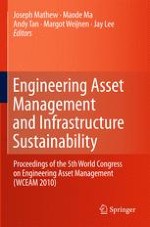2012 | OriginalPaper | Buchkapitel
Wear Mechanisms in Pneumatic Conveying of Sand and Analysis of Predictive Model for Pipeline Thickness Loss
verfasst von : A. A. Cenna, K. C. Williams, M. G. Jones
Erschienen in: Engineering Asset Management and Infrastructure Sustainability
Verlag: Springer London
Aktivieren Sie unsere intelligente Suche, um passende Fachinhalte oder Patente zu finden.
Wählen Sie Textabschnitte aus um mit Künstlicher Intelligenz passenden Patente zu finden. powered by
Markieren Sie Textabschnitte, um KI-gestützt weitere passende Inhalte zu finden. powered by
